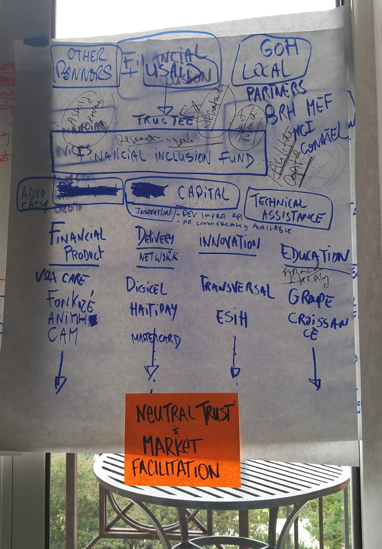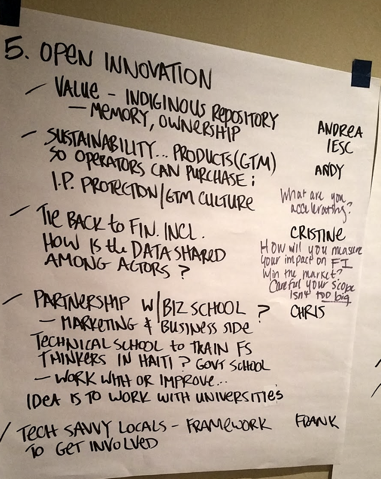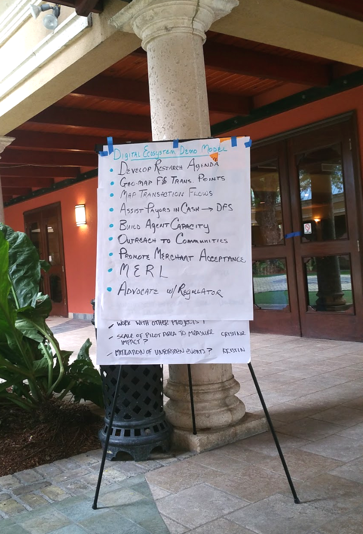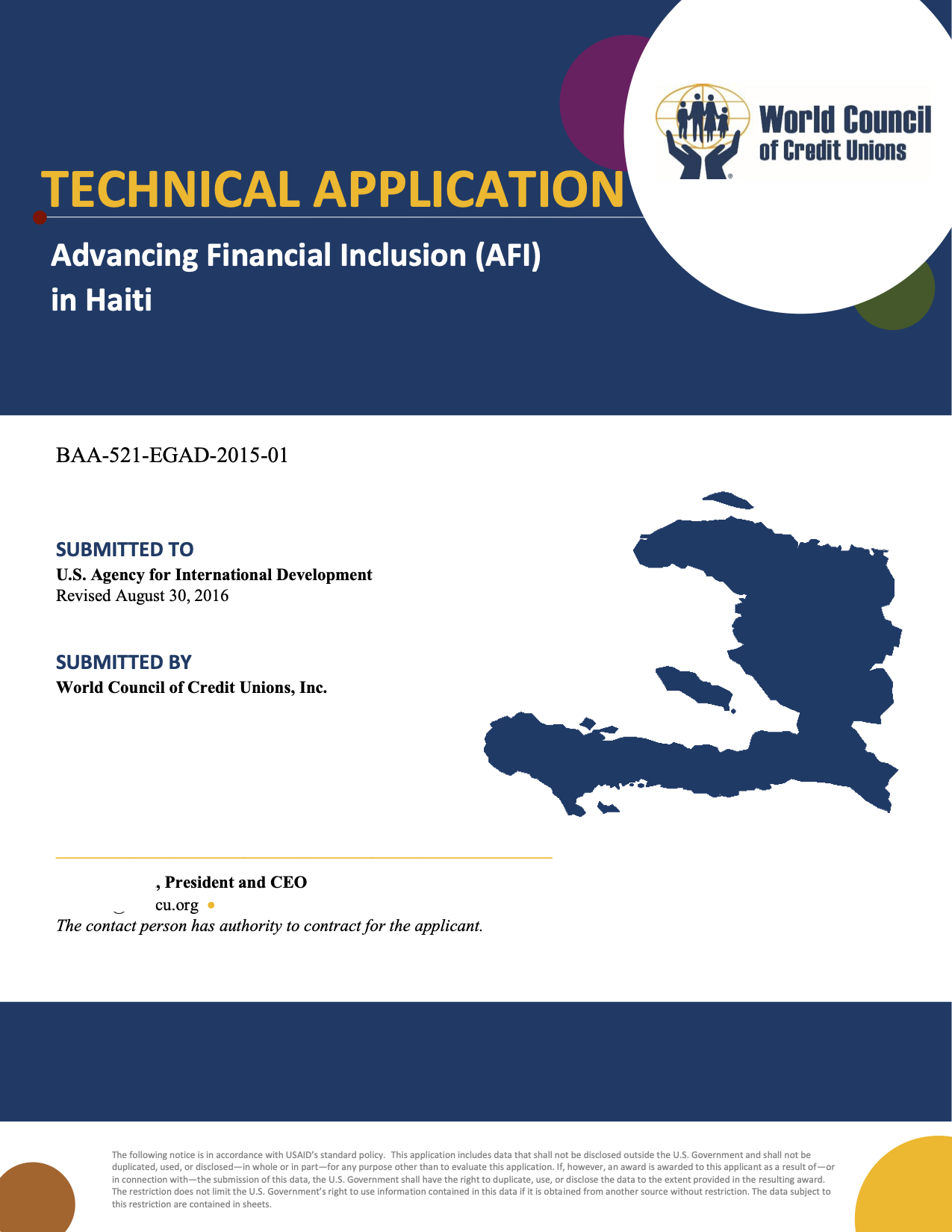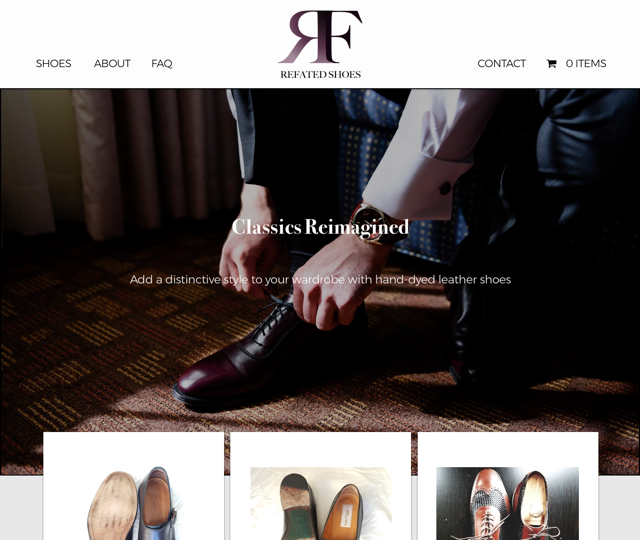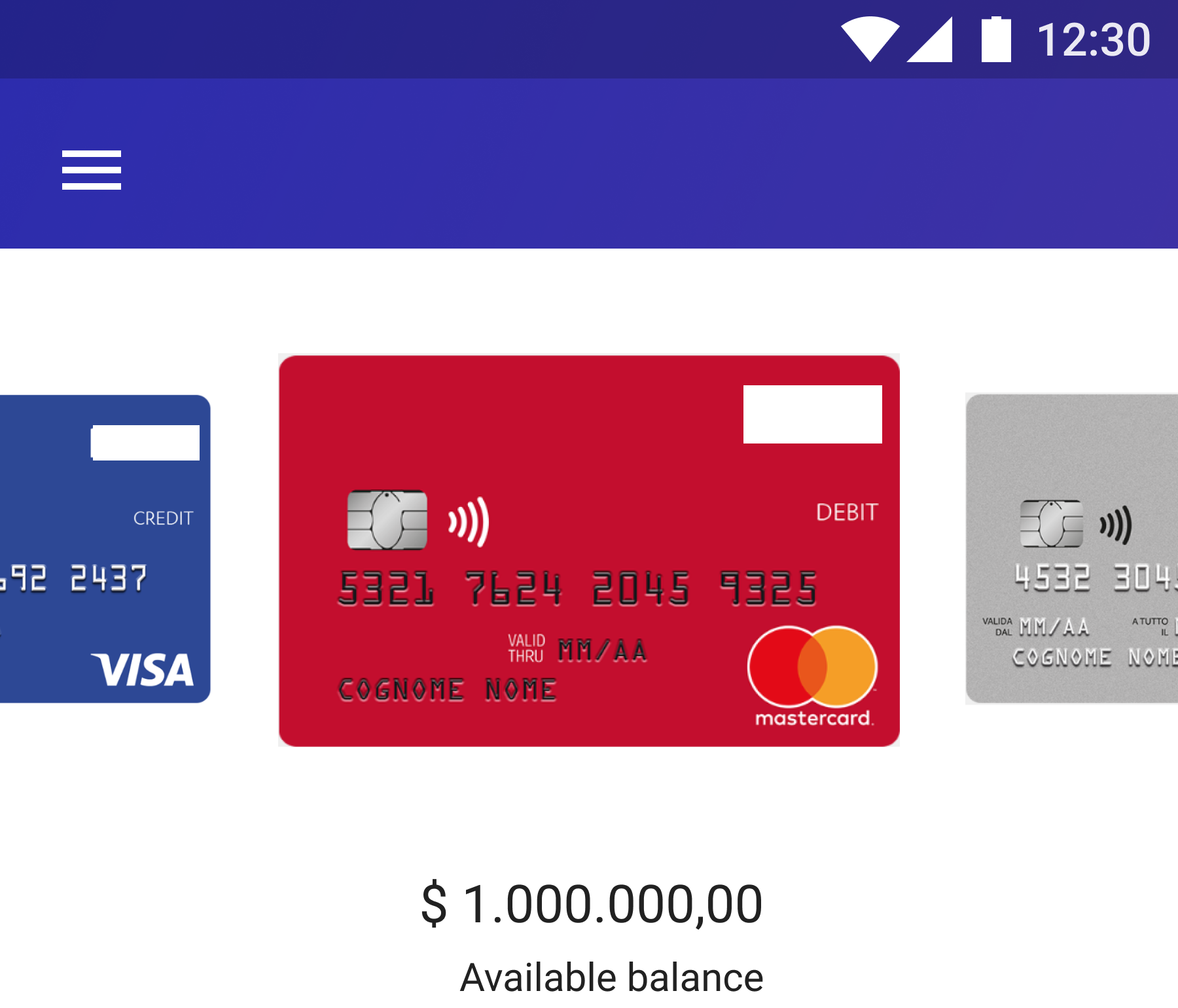Snapshot
I designed and won a $5m, 3-year program that connects
informal rural savings and loan groups to formal credit
unions with digital finance tools. Officially launched
in January 2017, I worked with USAID, local financial
institutions, our staff in Haiti, finance experts, and
colleagues in DC to co-create the Haiti Accessible
Finance Activity.
Strategy
Responding to donor requests are challenging - they expect
a detailed program and program team within a short span of
time. I always begin by trying to understand what we need to
learn. To help guide me through this, I developed a
project development canvas
- my take on the business model canvas. It keeps
me focused on defining the challenge or constraints, value
proposition, my company’s advantages, beneficiaries,
key partners, key metrics, and potential private-sector
partners that can contribute to the project.
Initially, I create a list composed of my guiding principles
and questions I want to be answered. For this project, my
list was short:
- The project has to be organic to ensure sustainability.
Haiti has a long history of failed projects and corruption.
I wanted to focus on something that was already created
by Haitians.
- Why weren’t financial services reaching rural areas?
- How much innovation was the client comfortable with?
Our main goal was to create a project that was organic, rather
than forcing something new while crossing our fingers hoping
it would work. Since we had been working in Haiti for more
than 9 years, I had a good understanding of the financial
system, both formal and informal. So, we wanted to work with
existing, yet informal, savings and lending groups in rural
Haiti to transform them into formal groups. Credit unions are
modeled similarly to these rural groups and WOCCU has a time-
tested model called field officer banking that incorporates
groups into their membership while creating individual accounts
- allowing for individual and group services. And most importantly,
it allows individuals to develop a relationship with formal
financial institutions, creating access to products and services
they had not had before.
Research
I tend to enjoy this part the most because it brings me
out to the field to meet the direct and indirect beneficiaries.
First, I conducted a thorough literature review,
compiling questions and creating brainstorming notes.
I used these notes to figure out who I should meet with
while in the country vs virtually as well as to create a
list of guiding questions for the interviews.
In Haiti, I conducted around 15 interviews over 2 weeks
and held brainstorming sessions with WOCCU’s staff in Haiti.
The interviews were with the client (USAID), other donors
in the country, potential competitors, NGOs conducting
similar or complementary programs, government officials,
local bankers, telecommunications operators, fintech
companies, and an incubator.
What I learned:
- Competitive Landscape: It was a crowded field.
Almost every organization working in financial
services was bidding on the program. We had to
highlight our advantage and value proposition over them.
- Digital finance regulation was improving, albeit slowly.
- Lack of connection between regulators and what was
happening on the ground.
- Financial institutions were afraid to provide
services and products to rural households due to a
perceived risk.
- Limited knowledge of finance and the use of cell
phones could hinder fintech growth.
- Small business growth was limited, as was the drive
to innovate and create in the financial sector.
From these insights, we knew we had to focus on the following:
- Value proposition of our project: private-sector
led & incentive-based
- WOCCU's advantage: 9+ years in Haiti with a great
reputation with the client and trusting relationship
with local stakeholders
Prototype & Test
July-August 2015: Submission of EOI that proposed 4
different interventions (as written in the project model canvas)
- Continue to improve the quality and availability
of products and services by building institutional
capacity and fostering innovation through private-sector
partnerships. Within institutions, we will improve
their governance and upgrade their management systems,
as well as develop their internal capacities to respond
to client needs through product and service development,
while remaining or becoming profitable;
- Leveraging and creating entrepreneurial talent in
Haiti by partnering with Ecole Superieure d’Infotronique
d’Haiti (ESIH) university to facilitate new ideas for
meeting financial services challenges;
- Create a forum linking GOH to the industry to
better understand on-the-ground realities and needs; and,
- Provide financial capacity training and tools for
financial institution employees and potential borrowers
in partnership with stakeholders and ongoing projects.
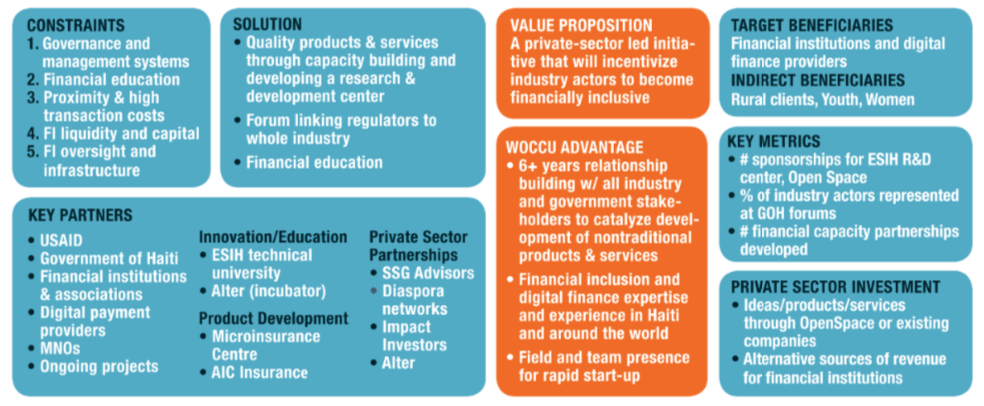
December 2015: 3-day workshop hosted by USAID Haiti
in Port-au-Prince.
The workshop was similar to a trade fair: Each competitor
had an easel pad and five minutes to showcase their ideas.
Then the client and competitors perused the presentations
and asked questions. At this stage, we made a strategic
decision to join forces with our competitor to create sister
programs that complemented one another. During the workshop,
we held brainstorming sessions in our hotel rooms.
See the image with paper taped to the window.
January 2016-August 2017: 5-page concept note, then
4 iterations of the full technical proposal. This included a
full staff, budget, activities, and partners. And each
iteration was completed within 24 hours to 4 weeks, depending
on the client’s request.
Finalize & Launch
We launched the program soon after signing our award in
January 2017. I continually monitored its progress, taking
note of the tweaks program managers made in order to add
improvements to the design process. If you'd like to read
more on the project, this is the
project site.
Learnings
This experience taught me a lot about myself and how I lead
proposal teams. Usually, clients give us budgetary and outcome
constraints, which create limitations for our proposal design.
Without restrictions, I lost sight of what we could achieve and
confined our activities to specific issues. Next time, I plan to
think big and add more perspectives during ideation to discuss
multiple viewpoints and reach better conclusions.
Check out other case studies.

